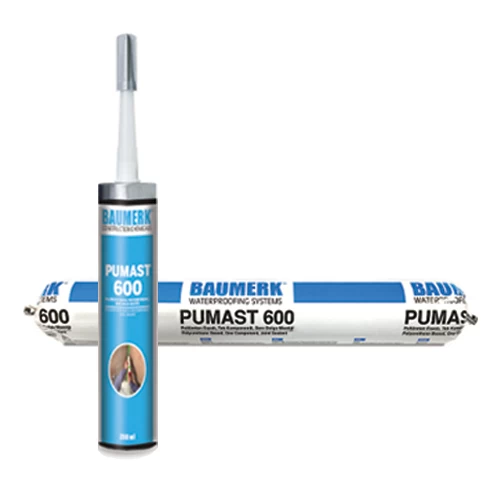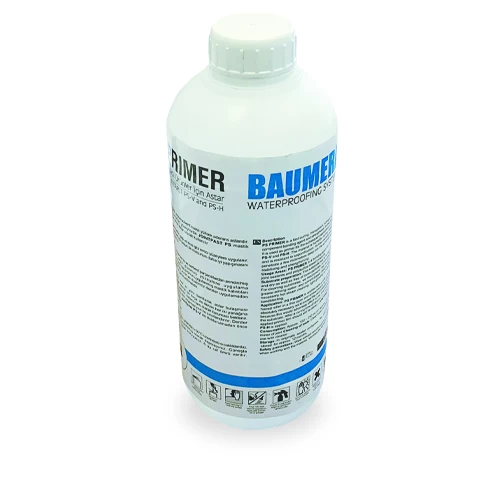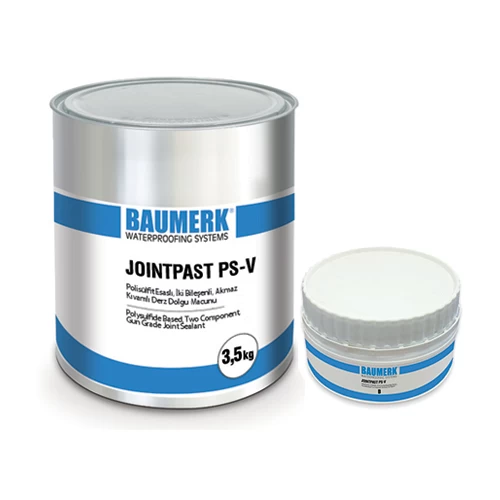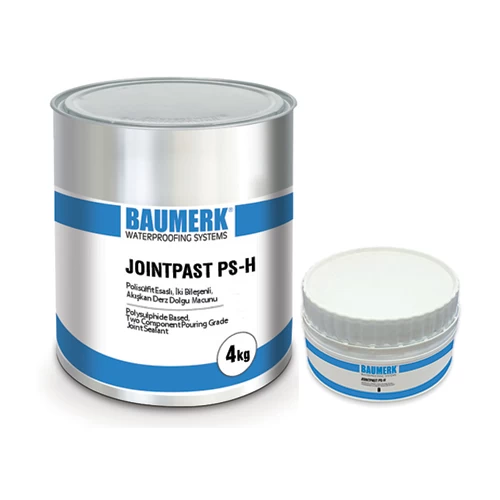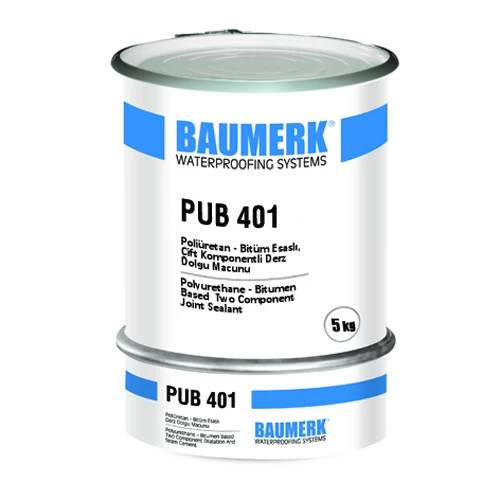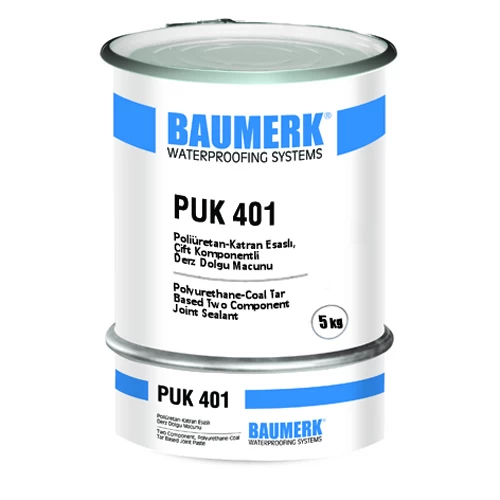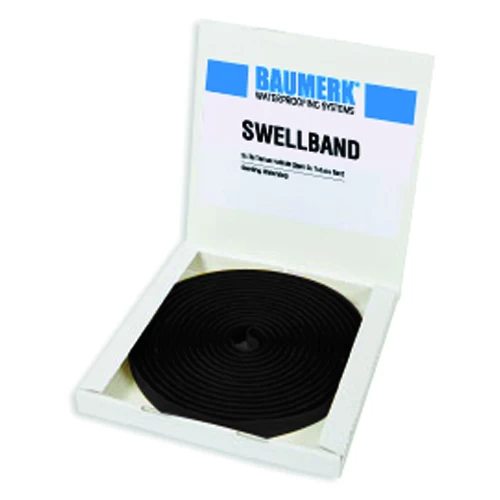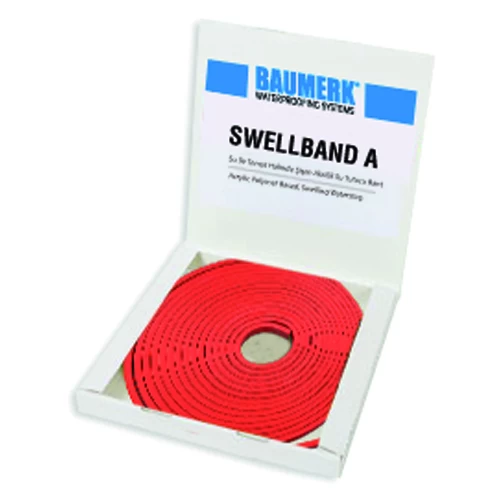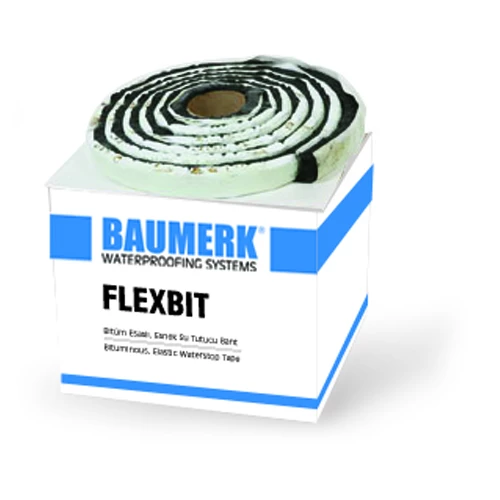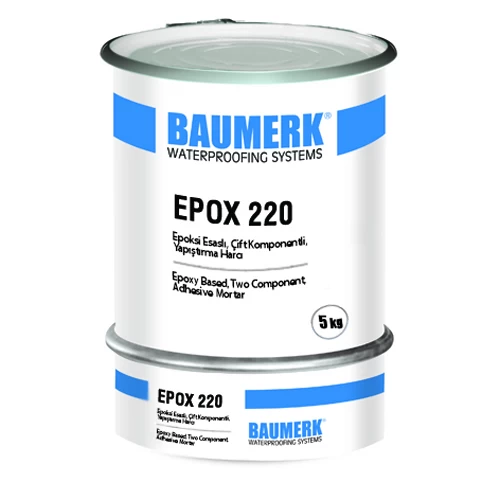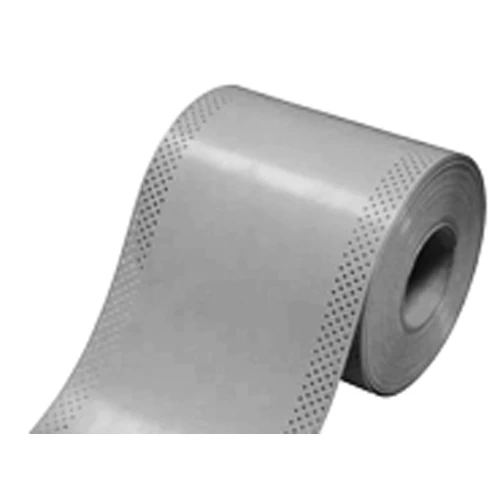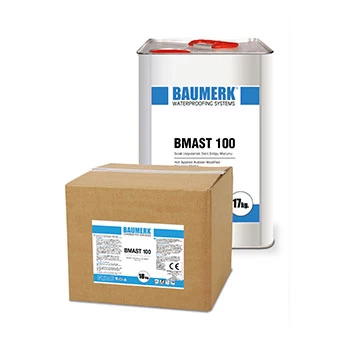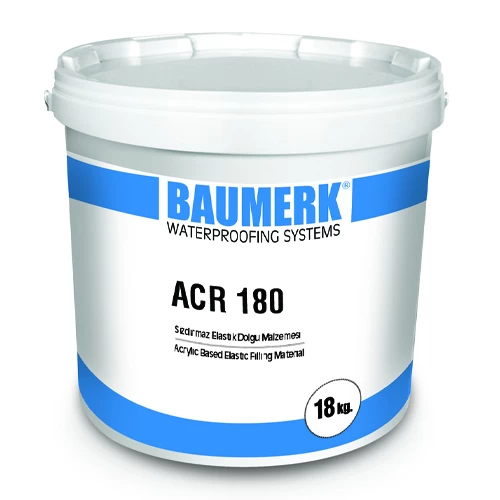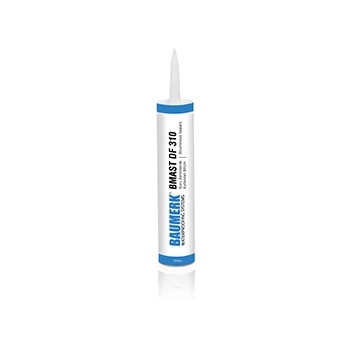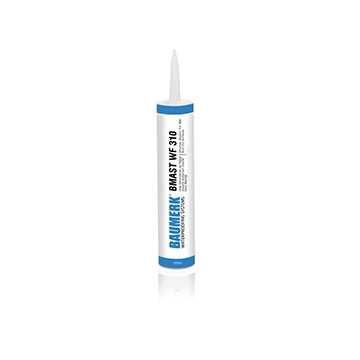One of the indispensable construction materials used in architecture is grouting. Grouting is a common construction material, especially on marble surfaces. For this reason, it is frequently used in bathrooms, kitchens, or other marble areas of any house. Grouting is one of the elements that increase the quality of construction and add value to a building. For this reason, choosing from a reliable and high-quality brand, applying and protecting it well; adds value to the structure where it is located.
Joint filling materials are the invisible heroes of construction and decoration projects. While making floors, tiles and walls look aesthetically perfect, they also contribute to the longevity of these structures.
The sealant and grouting products offered by Baumerk provide high performance in indoor and outdoor applications, offering unique solutions in terms of waterproofing, flexibility and durability. These products, which have the qualities needed especially in bathroom, pool and concrete applications, are the key to long-lasting structures beyond being the choice of professionals.
What is Joint Sealant and Why is it Important?
We will start our review by determining what grouting is. Architects, engineers, and those working in other construction-related professions know this material closely... However, it is useful to explain it for beginners or those who want to get detailed information.
A joint filler is a chemical compound used to fill the gap between two parts of a structure or two adjacent structures. The areas of use of grouting are quite wide. The first area of use that comes to mind is ceramic tiles. It is used especially in the process of filling between the tiles that we are used to seeing in areas such as bathrooms, kitchens, balconies, terraces, vestibules, or pools. In addition, grouting is also used between wall stones. Filling the gaps between the wall stones or bricks with mortar and flattening them by troweling on the upper parts reveals the joints. The material that fills these gaps is grouting.
Grouting provides aesthetic and functional protection by filling the gaps between tiles, ceramics, tiles, or stone surfaces. These gaps can be exposed to dirt, water and chemicals over time, so joint sealants increase the durability of structures by protecting surfaces from such factors.
Waterproof joint sealants, among Baumerk's construction chemicals, play a critical role in areas such as bathrooms, pools, kitchens, and terraces where water comes into frequent contact. When the joint sealant is not applied or the wrong material is used, problems such as water leakage, mold, and cracks are inevitable.
Grouting is also used to fill cracks that may form on concrete over time. Various openings can occur on concrete surfaces over time. These openings may occur as a result of climatic conditions or impacts, as well as due to the aging of the material over time. In such cases, grouting is used to prevent these cracks from growing and damaging the concrete.
The joint filler is basically a substance that will hold the two materials it comes between together in a solid way. For this reason, it is seen as cement or gypsum-based.
Joint Filler Types: Solutions Suitable for Your Needs
Baumerk offers a wide range of joint sealants for all types of structures and applications. Whether used indoors for aesthetic purposes or outdoors for durability and longevity, choosing the right material is critical for building safety.
Cement Based Joint Sealants: Durable, economical, and with a wide range of applications, these products are especially preferred in large areas and interiors.
Silicone Joint Sealants: Silicone joint sealants, which stand out with their flexibility and waterproof properties, reduce the risk of cracking on moving surfaces. It offers an ideal solution especially in areas exposed to water, such as bathroom grouting or pool grouting. The difference between silicone grout and normal grout is most evident in these flexibility and waterproofing issues.
Concrete Joint Sealants: Suitable for use outdoors and on floors, concrete joint sealants are resistant to heavy loads and weather conditions. These materials are an excellent choice for areas exposed to intensive use such as terraces, garages and factories. Concrete joint sealant offers rich properties in terms of waterproofing and chemical resistance, helping to protect long-lasting structures.
Waterproof Joint Sealants: The Guarantee of Durability
Baumerk's waterproof joint sealant products provide excellent protection against water in both indoor and outdoor applications. These products, which are especially used in areas that are constantly exposed to water such as bathroom grouting and pool joints, prevent water leakage and prevent damage to structures. Waterproof joint materials offer healthy and long-lasting surfaces by preventing mold and other water-related problems.
Pool joint filling material is preferred in structures such as pools that are constantly in contact with water and offers the highest performance in terms of impermeability. At the same time, these filling materials are resistant to chemicals and reduce the maintenance cost of pools.
We took a look at what grouting is.
So, what are the benefits of this application? The joint cut, which is usually about half a cm wide and usually about 8 to 10 cm deep, is open to external factors. For example, in rainy weather, rain or snow water or hailstones can fill it. In addition, these waters may freeze during the cold winter months.
As a result of this freezing, sometimes cracks may occur in the concrete. Sometimes dust or soil particles may accumulate between them in stormy weather. Considering all these reasons, it becomes clear that the joints should be filled with filling. In order to prevent all these, it is necessary to fill the joints with filling.
How to Choose the Best Quality Joint Sealant?
Choosing the most suitable type of joint filler for your project is extremely important for the health and durability of your building in the long term. Here are some factors to consider when choosing:
Area of Use: Indoor or outdoor, will it be exposed to water, does it need to withstand heavy loads? The right material should be selected according to the application areas such as bathroom grout or concrete grout.
Flexibility: Especially if it will be used on moving surfaces, silicone joint sealants should be preferred. These products minimize the risk of cracking and rupture.
Durability and Water Resistance: Waterproofing is an important criterion for areas in constant contact with water. Waterproof joint sealants offer the best solution for bathrooms, kitchens, pools and terraces.
How are Joint Sealants Applied?
Filling between joints is a process that requires expertise. For this reason, performing the steps of the process without skipping and performing it by experienced and even experts in this field will give the best results. Joint application steps can be listed as follows;
Before starting the grouting process, it is necessary to make sure that the adhesive is cured.
The second preparation step is to make sure that the grouting spaces are clean. In order for the joint filling to be processed smoothly, there should not be any visible substances in the joint gaps. These substances are removed.
In order to make the cleaning process easier, surface protection agents can be applied to the upper surface of a coating material with an absorbent and porous structure, taking care not to contaminate the joint gaps.
We need to remind you of an element to be considered especially in hot and windy weather: If you are using a highly absorbent coating material, do not forget to moisten the joint gaps with clean water during application.
Now it is time to mix the joint material and water... Water and joint material should be mixed in a sufficiently large bucket or container. The ratio of these two varies according to the joint filler to be used. For example, 6 liters of water will be sufficient for 20 kilograms of grouting.
It is important not to rush when pouring the grouting material into the water. Slowly poured joint filler should be mixed with water. Homogeneity is the key word at this point. It is necessary to make sure that no part of the joint filler remains solid. For this reason, it is useful to mix it patiently and slowly adding it to the water.
Let's make a small reminder at this point. It is very important to correctly adjust the amount of water to be mixed with the joint sealant. You can also confirm this when you buy the joint sealant by getting advice from the brand that sells it, Baumerk, which offers its customers a superior service both during and after the purchase of the product, pays attention to this point and answers all questions at the necessary points. More or less water than the required amount damages the joint sealant. These damages may manifest themselves as dusting, cracking or a defect in the color of the material. To avoid this, be sure to pay attention to the amount of water.
After mixing the jointing material and water, the resulting mortar should be left to rest. The resting time should be limited to five to ten minutes. At the end of the resting period, the mortar should be mixed one last time for about one minute before application. This will bring it to the right consistency.
Spread the joint mortar on the surface where the joint gap is located. The spreading process is done using a rubber trowel. Diagonal movements should be applied to fill the joint gaps correctly. Excess grout should be removed from the surface by scraping.
After all joint gaps have been filled, the waiting period begins. Allow the joint filler to mattify for approximately 10 to 20 minutes. This time varies according to the air temperature and the amount of wind. Then the excess material remaining on the surfaces is cleaned with a damp sponge. Using this sponge in circular motions on the surface will make your job easier. If you are working in a large area, we recommend that you continue to use the sponge you use during cleaning after cleaning it from time to time. This way you can achieve the best results.
After the joint filler is completely dry, the surfaces are finalized by wiping with a dry cloth. If grouting remains on ceramic surfaces or elsewhere, it can be removed with a cement remover approximately 10 days after application.
Joint Sealant Types
Silicone Joint Sealant
One of the types of joint sealant is silicone joint sealant. Silicone joint sealant has a wide range of uses. It can be used on different wet surfaces such as ceramic, tile, granite and marble. It can be used both indoors and outdoors.
It is a cement-based material. This joint filling material, which has a polymer binder additive and has a structure containing water-repellent silicone, is very durable.
So much so that, whichever area it is applied to, it can make that area completely waterproof. It does not crack over time. You can use silicone joint sealant to fill joint gaps up to eight millimeters wide. The result is a smooth and even surface. With this material, which is easily prepared and applied in an easy way, it is possible to save both time and labor.
Epoxy Joint Filling Material
Epoxy joint filling material is one of the most widely used joint filling products. It is used to fill joints from 2 millimeters to 15 millimeters. Epoxy joint filling material does not contain solvent. Compared to equivalent products, it is seen that it is applied and cleaned much more easily. This joint filling material is very high strength.
It is also resistant to chemical effects. The usage area of epoxy joint filling is quite wide. It can be applied both indoors and outdoors on surfaces such as porcelain ceramic, glass mosaic and tiles. This product is especially preferred on surfaces where cement-based joint sealants are not suitable for use. These surfaces include factories in the food industry, dining halls, kitchens or other food preparation areas, swimming pools and saunas, and spas.
Baumerk's Joint Sealant Products
Baumerk, one of the world's leading brands in construction materials, shows its expertise in joint filling in every material. Baumerk Joint Sealant products, which are of much higher quality than other joint filling materials on the market, also produce much more satisfactory results in terms of price performance compared to their equivalents. If you want to take full advantage of the product you have purchased and use it without wasting any part of it, you can contact Baumerk.
